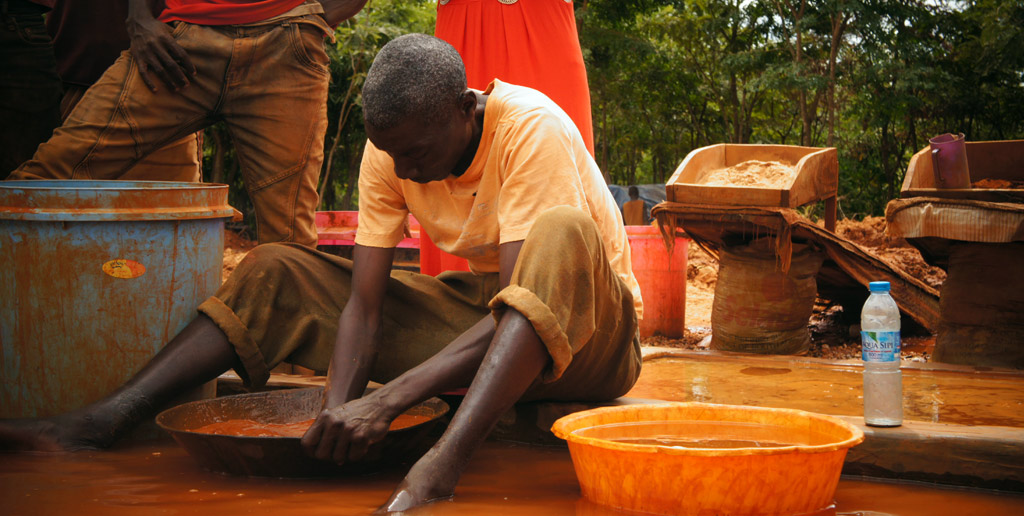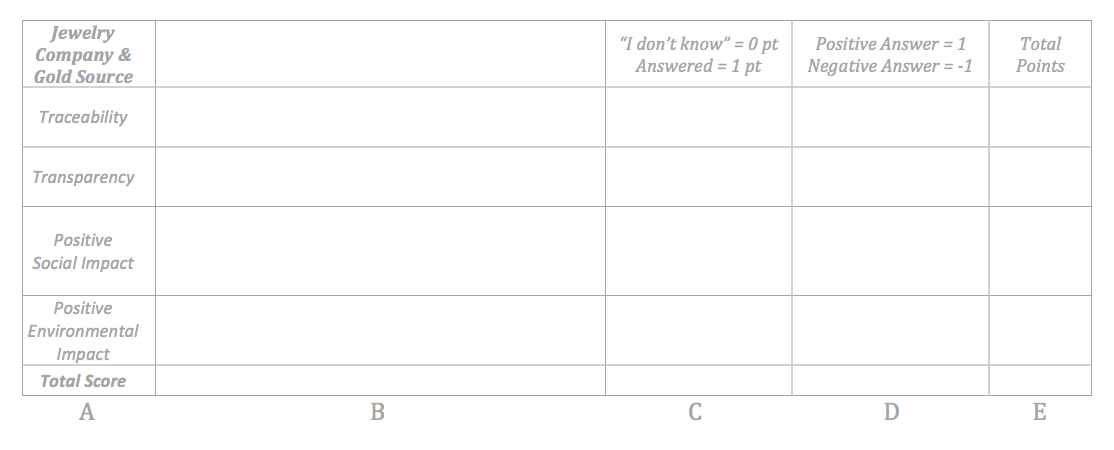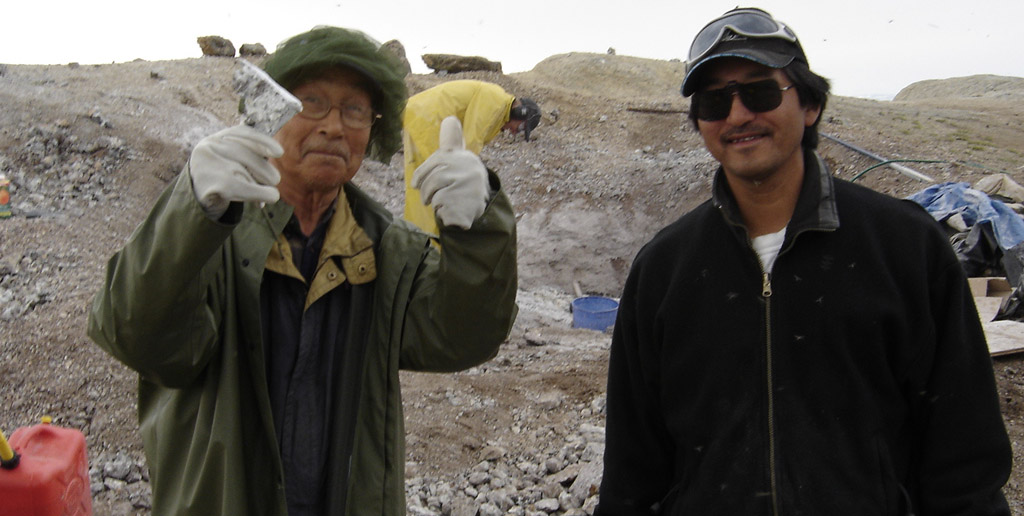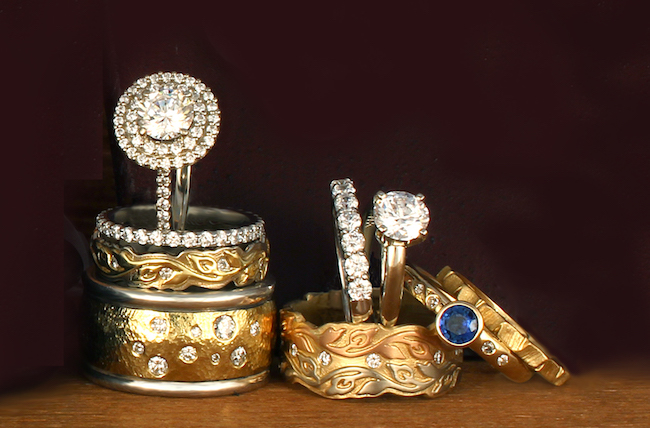If you want to purchase the fairest diamond ring of all, a ring that is the most socially and environmentally responsible, then you'll want to read this article.
I’m going to give you insider information that probably no other jeweler branding themselves as “ethical” would reveal.
I know what’s going on because I’ve been a jeweler over twenty years and an activist at the radical forefront of responsible and fair trade jewelry sourcing.
The Fairest Diamond Ring Of All Method is a step by step process that will empower you to cut through marketing spin.
But before we go on to the method, we’ll start with a bit of truth telling-- a case study that will reveal why even using the term “conflict free” is about as ethically spineless as milk toast.
A Case Study
The Fairest Ring Of All Method actually came out of a conversation I had with a couple, Luis and Jamie, who had been together just over two years. They were in their mid-thirties and they were looking to formalize their engagement. They have come to my store because they could get a Fairtrade Gold ring.
What surprised me the most about Luis and Jamie was their research diamonds issues. I learned later that Luis actually worked as the Executive Director of an environmental organization while Jamie was an avid community organizer. He wanted to buy Luis a diamond, but Jamie boycotted the idea after reading Global Witnesses website.
By the time we met, Luis had already determined that the Kimberley Certification Process, which designates diamonds as “conflict free” didn’t include human rights, child labor or environmental issues, which was impressive. Like, way beyond Diamond Ethics 101. But she was also concerned about the history around diamonds, particularly in the nineties.
“No restitution to the communities impacted by conflict diamonds,” she said, shaking her head. Then asking me directly, “Was the response of jewelers to three million people who died in wars funded by diamonds simply invent the term “conflict free” for marketing purposes? ”
“Whether it was created for marketing purposes or not, it seems to function that way now,” I replied.
“Have the conditions among those small diamond miners who died improved since the invention of “conflict free?”
“Not at all,” I sadly replied. I told her how years ago I argued publicly on a prominent blog that the Kimberley Certification Process should be repealed. The issues around diamonds and conflict continue today.
“Now, when I see the term “conflict free,” I just think that it's really saying that the lives of those people in Africa really don’t matter.”
She had just made a huge connection that no other customer had ever made before. You see, what really happened is that after all the wars, the large international diamond groups came up with the notion of “conflict free” which made diamonds okay to the public. All of a sudden, diamonds were clean. That 3 million people died in wars that diamond funded was just a historical event to be forgotten.
Here’s a similarly daunting dirty secret that I wrestle with: Imagine if Germany said, after WWII, 'Now that we’re a western democracy, we can erase the past.'
Well, that is exactly what I think of when I see “conflict free” or “beyond conflict free.” Like my customer said, just using that term buys into the “conflict free” framework which created no improvement to the lives of those impacted by diamond trade.
I’ve had conversations with leading jeweler activists around this issue and we’re all in agreement. But I can’t help but feeling that there is no “conflict free” or “beyond conflict free” that without truth and reconciliation and restitution to impacted communities.
Honestly, the term itself has become repugnant even though it's used on some of my websites.

The Fairest Diamond Of Them All Method
Before we go into the steps, a quick note. This article focuses on diamonds. I’ve written companion article on the material that makes up a ring here.
The steps are actually a series of questions that you ask your jeweler. What we’re actually looking for is a traceable and transparent supply chain from the actual mine to your finger.
I’m just going to give the questions and then, below, I’m going to give you examples from well-known diamond suppliers that get to the information that you’re seeking.
- First, you ask your jeweler, where is the actual location of the diamond mine that your diamonds come from?
- Second, what is the name of the company that owns the diamond mine?
- Third, you ask what is the social impact of the mine on the ground?
- Fourth, you ask what is the environmental impact of the mine?
- Fifth, simply compare notes. You may also want to research further on line.
Important note: The more specific you can get with your answers, the better.
Here’s the basic format in a chart you can use in the process. It is also going to be provided in a PDF format at the end of the article.

This easy-to-use table will be made available to you at the end of the article.
By knowing the information, you can get some idea of the social and environmental impact of the diamond you are purchasing.
I think you’ll agree with me one of the strengths of the The Fairest Diamond Ring Of All Method is that it does not involve using the “conflict free” framework.
Instead, the step by step process allows you to evaluate the actual source of your diamond by gathering the information that you need to make an educated decision.
How Fair Is Your Diamond?
Let’s talk about the notion of fairness first: the basic idea is to distribute as much benefit to the 99%, the producers on the ground, rather than concentrate wealth to large mining conglomerates and their shareholders.
In the ideal world, we would source diamonds from a small-scale mining community, one that would build a vibrant local economy in a community. If that community also cut the diamonds, creating more downstream business, people of the land would be able to fully benefit from the resources of their land.
Over the past ten years, several attempts have been made to bring such a diamond to the jewelry market. I’ve even been involved with one of these such diamonds as a consultant, and nothing has come through… yet.
What do you do then? Follow the method. Ask the questions.
Where is the diamond mine? What is the company? What is the social and environmental impact?
This method is particularly potent because it opens up a real conversation. For example, many ethical jewelers may tell you location of the mine, without revealing the company that is owning the mine.
Let me tell you a brief story about what I mean.
I got in an argument with an “ethical” jeweler proud about selling Canadian diamonds to the “Patagonia Customer”. I am certain that many Patagonia customers may want to buy a DeBeers diamond which is next to a Cree Community which has had hundreds of suicides. The People in this community have not been able to benefit from the diamonds on their traditional lands as they had hoped when they signed their Impact Benefit Agreement. This issues are very complex.
You would never know this if you just bought a Canadian diamond. You have to ask the first two questions in the PDF worksheet.

Canadian Diamond Options
On the negative side, the only diamonds sources that have a traceable and transparent supply chain are large mining companies, such as DeBeers.
On the positive side, large-scale mining companies operating in Canada such as Rio Tinto (Diavik), BHP Billerton (Ekati) and yes, even DeBeers, offer traceable and transparent supply chains, from mine through the polishing process.
Canadian mines are on First Nation lands. They have impact benefit agreements, (IBA) support local businesses and the provincial governments through tax. But if you dig into the IBAs, you’ll see there’s a common among First Nation groups who owned the land where the diamond mines operative that the benefits and trickle down economy are not enough.
Environmentally, diamond mines do not have the same kind of giant impact as gold mines because chemicals are not needed to remove diamonds from kimberlite deposites. Though these large-scale mines are heavily regulated, any Canadian diamond mine has a significant negative impact. The large craters in pristine northern aquatic and arboreal environments are not a pretty sight.
Diamonds From Africa
It somehow seems unfair that a diamond miner employed in a Canadian mine will make in a day more than a small scale diamond miner digging with a shovel in dirt makes in a month or two.
Africa needs the diamond economy and DeBeers still controls much of the African diamond sector, as they did in the nineties when millions were killed in diamond funded wars.
One new development is that DeBeers is now controlled by Anglo American, one of the top five mining companies in the world. Just the implication of name, “Anglo American” says it all.
Yet, for a large-scale project, the diamond sector in Botswana-- which is a partnership with DeBeers-- is ideal. The government has majority control over Debwana mines, and diamonds are cut and polished in country, providing huge economic benefit.
Another excellent project that purchases diamonds from DeBeers but cuts them in Namibia are the Kalahari diamonds. But the question is, are you comfortable purchasing your diamond from DeBeers given their history?
Where Is The Fairest Diamond Of Them All?
There are a few other choices that I have not mentioned, but I will now in conclusion.
A lot of ethical jewelers, including myself, offer synthetic diamonds and recycled diamonds as options. A recycled diamond might originally be a blood diamond. Neither provide benefit to producer communities in emerging economies. Nor do they reduce mining, which is going to take place regardless.
I generally recommend diamonds from Diviak or Ekati. But the diamond mining economy is critical to Botswana’s successful economy.
Here’s the bottom line, my final word.
First, don’t buy diamonds from companies that are having a hard time answering the questions provided in this article. If you are not convinced, read this in Foreign Policy magazine: Rough Cut.
Second, ignore jeweler jargon, such as “ethical” or “conflict free”. These confine you to frameworks that fail to provide you with the most important information you need.
Third, Remember the method: Where is the diamond mine? What is the company? What is the social and environmental impact?
Overall and most importantly, you’ll have the information you need in order to make a decision that will best align the meaning of your diamond with what it represents to YOU in your own heart, lifestyle and economic purchase.
The Worksheet
Oh yes, there's a worksheet. But it's here to help!
This PDF breaks down all that you read here and puts it into a few actionable steps.
